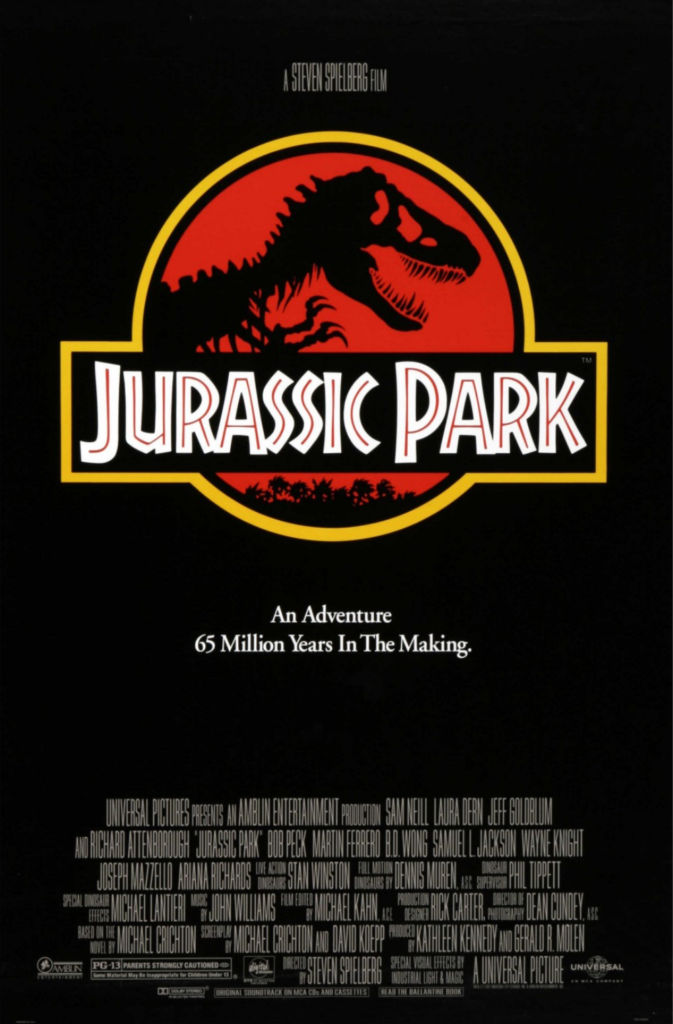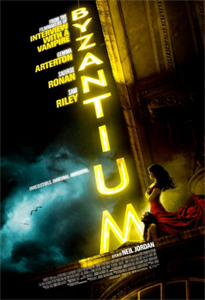Starring: Gemma Arterton, Saoirse Ronan, Caleb Landry Jones, Jonny Lee Miller and Sam Riley
Directed By: Neil Jordan
Rated: R
Distributed by: StudioCanal
Running Time: 118 minutes
Our Score: 4 out of 5 stars
It’s been nearly twenty years between Neil Jordan’s gorgeous star-filled adaptation of Anne Rice’s Interview with the Vampire and this new bloodsucker story, an interim which has really seen the genre stretched to its limits. It is with great relief then to report that despite having a sixteen year old lead, Byzantium has much more in common with that 1994 classic than Twilight or any of its pretenders. While not quite reaching the sprawling grandeur of Interview, it manages to create its own lore and is worth a watch for its two powerhouse leading women.
The film follows Clara (Gemma Arterton) and Eleanor (Saoirse Ronan), a mother-daughter vampire team who have been eking out a living on the road for the past two centuries. Unable to create a stable home for themselves as they’re chased by a patriarchal secret society, the two women take drastically divergent approaches to handling their bloodlust. Clara, who we meet in a modern strip club, has grown alongside The Oldest Profession—picking off those who, to her mind, “the world would be a more beautiful place” without—while Eleanor takes a more euthanasic approach. The younger one steals into the rooms of the dying and gently sees them off. Their most recent home base here is the titular Byzantium hotel that Clara commandeers from a lonely client of hers (Daniel Mays) for use as a brothel. As the society in pursuit of the women gets closer, we watch in flashbacks their vampiric origins and how they came to cross these men. All the while Eleanor is trying to rebel against mother Clara by sharing their story with others. Clara never lacks company, while Eleanor is in need of actual connection.
The film’s main strength lies in its cast. Saoirse Ronan is perfect as the perpetual sixteen year old. Despite minimal bloodshed, her interactions with her victims are among the most chilling moments in the film. In one standout scene Eleanor is forced to defend her life story to an incredulous creative writing professor when the assignment was for pupils to write something true. You can sense the centuries old fatigue in Ronan’s youthful face as she calmly lays out to this professor why its impossible for her to prove her immortality in this moment, but one day… It’s a performance that may remind you of Ronan’s icy breakout role in Joe Wright’s Atonement, another character who sought to work out her troubled life through writing. Meanwhile, Arterton’s Clara is just as magnetic. Under the cover of her sexual confidence (and a jaw-dropping wardrobe to match) is layered a much more desperate mother who’s still trying to support her child in the only ways she knows how. Only eight years apart in real life, some of Arterton and Ronan’s best scenes feature all-too-human “mother knows best” type arguments which really sell their relationship. Clara means well, but her growing fear of even her two hundred year old baby going off into the world throws her into a frenzy which makes Arterton increasingly scary while remaining sympathetic. The leading ladies are also given excellent support from the likes of Tom Hollander, Caleb Landry Jones, Jonny Lee Miller and Sam Riley. Riley and Miller greatly boost the somewhat slower flashback sequences as soldiers from whom Clara originally stole the route to immortality from in the 1800s. These scenes are gorgeously shot (by Sean Bobbitt of Shame) but tend to linger more than necessary while the modern scenes hold more forward momentum.
Byzantium is also notable for its casual disregard of some of the more famous vampire “rules.” Daylight isn’t preferred but nor is it deadly, everyone casts reflections and so forth. Most strikingly, it’s fangless, opting instead for a growing thumbnail spike that called to my mind the pointed ring that Tom Cruise’s Lestat used in Interview. Such touches keep the traditional horror aspects—and blood loss— to a minimum and shift the focus instead to the relationships of these immortals to each other. That’s not to say the film isn’t without some shocking gore moments—a decapitation in the first five or so minutes will dispel this notion anyway—but that it’s not the primary focus of the film and it really doesn’t need to be. It’s a haunting, visually beautiful film that while slow at times, warrants revisiting this often seen genre.


